Related Research Articles
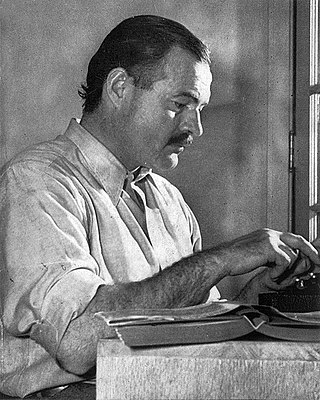
Ernest Miller Hemingway was an American novelist, short-story writer and journalist. Known for an economical, understated style that influenced later 20th-century writers, he has been romanticized for his adventurous lifestyle and outspoken, blunt public image. Some of his seven novels, six short-story collections and two non-fiction works have become classics of American literature, and he was awarded the 1954 Nobel Prize in Literature.

Lucy Douglas "C.Z." Guest was an American actress, author, columnist, horsewoman, fashion designer, and socialite who achieved a degree of fame as a fashion icon. She was frequently seen wearing elegant designs by designers like Mainbocher. Her unfussy, clean-cut style was seen as typically American, and she was named to the International Best Dressed Hall of Fame List in 1959.

Barbara Woolworth Hutton was an American debutante, socialite, heiress, and philanthropist. She was dubbed the "Poor Little Rich Girl"—first when she was given a lavish and expensive debutante ball in 1930 amid the Great Depression, and later due to a notoriously troubled private life.

Green Hills of Africa is a 1935 work of nonfiction by American writer Ernest Hemingway. Hemingway's second work of nonfiction, Green Hills of Africa is an account of a month on safari he and his wife, Pauline Marie Pfeiffer, took in East Africa during December 1933. Green Hills of Africa is divided into four parts: "Pursuit and Conversation", "Pursuit Remembered", "Pursuit and Failure", and "Pursuit as Happiness", each of which plays a different role in the story.

Caroline Lee Bouvier, later Canfield, Radziwiłł, and Ross, was an American socialite, public relations executive, and interior designer. She was the younger sister of former First Lady Jacqueline Bouvier Kennedy Onassis and sister-in-law of President John F. Kennedy.

"The Short Happy Life of Francis Macomber" is a short story by Ernest Hemingway. Set in Africa, it was published in the September 1936 issue of Cosmopolitan magazine concurrently with "The Snows of Kilimanjaro". The story was eventually adapted to the screen as the Zoltan Korda film The Macomber Affair (1947).

Winner Take Nothing is a 1933 collection of short stories by Ernest Hemingway. Hemingway's third and final collection of stories, it was published four years after A Farewell to Arms (1929), and a year after his non-fiction book about bullfighting, Death in the Afternoon (1932).

Baron Bror Fredrik von Blixen-Finecke was a Swedish nobleman, writer, and African professional hunter and guide on big-game hunts. He was married to Karen Blixen from 1914 to 1925.
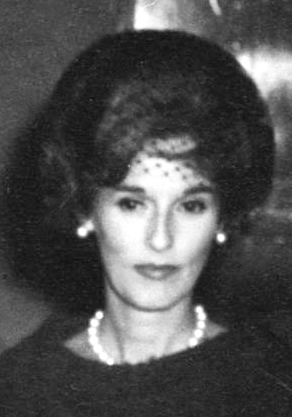
Barbara Cushing Mortimer Paley was an American magazine editor and socialite. Affectionately known as Babe throughout her life, Paley made notable contributions to the field of magazine editing. In recognition of her distinctive fashion sense, she was inducted into the International Best Dressed List Hall of Fame in 1958. Together with her two sisters, Minnie and Betsey, she was a popular debutante in her youth and the trio were dubbed "The Fabulous Cushing Sisters" in high society. She was married twice; first, to the sportsman Stanley G. Mortimer Jr. and second, to CBS founder William S. Paley.

Nancy "Slim" Keith, Lady Keith of Castleacre was an American socialite and fashion icon during the 1950s and 1960s, exemplifying the American jet set. Keith was married 3 times; first to American film director Howard Hawks, second to American producer Leland Hayward, and finally to British banker and aristocrat Kenneth Keith, Baron Keith of Castleacre.

The Reluctant Debutante is a 1958 American comedy film directed by Vincente Minnelli and produced by Pandro S. Berman from a screenplay by William Douglas-Home based on Douglas-Home's play of the same name. The music score is by Eddie Warner and the cinematography by Joseph Ruttenberg.

Pauline Marie Pfeiffer was an American journalist and the second wife of writer Ernest Hemingway.

Edith Cummings Munson, popularly known as The Fairway Flapper, was an American socialite and one of the premier amateur golfers during the Jazz Age. She was one of the Big Four debutantes in Chicago during World War I. She attained fame in the United States following her 1923 victory in the U.S. Women's Amateur. On August 25, 1924, she became the first golfer and first female athlete to appear on the cover of Time magazine. She also was the literary model for the character of Jordan Baker in F. Scott Fitzgerald's novel The Great Gatsby.
Macomber may refer to:
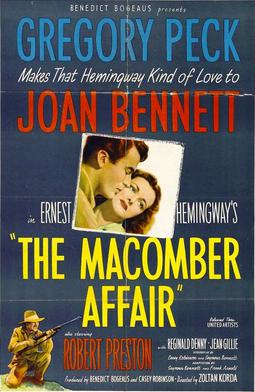
The Macomber Affair is a 1947 American adventure drama film starring Gregory Peck, Joan Bennett, and Robert Preston. Directed by Zoltan Korda and distributed by United Artists, it portrays a fatal love triangle set in British East Africa between a frustrated wife, a weak husband, and the professional hunter who comes between them.
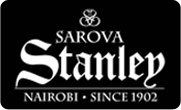
The Stanley Hotel is a five-star hotel in Nairobi, Kenya. It is the oldest hotel in the city, having been established in 1902 by English businesswoman Mayence Bent, when the city was a railway halt. It is named after Sir Henry Morton Stanley, a Welsh explorer who is best known for his explorations of central Africa and his successful search for missionary and explorer David Livingstone.

Ann Geraldine Mary Fleming was a British aristocrat and socialite. She had three husbands: Lord O'Neill, Lord Rothermere and Ian Fleming.
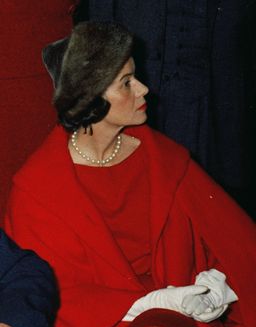
Susan Mary Alsop was an American writer and socialite active in Washington, D.C., political circles. She was the wife of columnist Joseph Alsop and a descendant of founding father John Jay. Her Georgetown home hosted dignitaries and publishers during the 1960s and 1970s ranging from John F. Kennedy, Phil Graham, Katharine Graham, and Isaiah Berlin, earning her the nickname "the grand dame of Washington society."
Martha Lindley Blaine Trump is an American socialite. For 29 years she was the wife of real-estate heir Robert Trump.

Emily Key Hoffman, known upon her marriage as Mrs. F. Y. Dalziel, was an American socialite, heiress, dancer, and big-game hunter. A prominent debutante of the Gilded Age, she was a leading figure in New York and Newport high society. Hoffman was an accomplished amateur dancer and performed Spanish dances at various social events. Dubbed "the Carmencita of New York society", one of her performances in 1900 at the Waldorf-Astoria earned her a standing ovation and an invitation from Lew Fields and Joe Weber to perform on Broadway, an offer she declined due to the rigid expectations for women of her social class.
References
- 1 2 3 4 5 6 7 8 9 10 11 12 13 14 15 16 17 18 19 20 21 22 23 24 25 26 27 28 "American Woman". 6 May 2021.
- ↑ Orton, Kathy (10 January 2020). "Villa in Potomac, Md., has been financier's home, convent school". Real Estate. Washington Post . Retrieved 5 June 2022.
- ↑ "MISS JANE KENDALL TO WED G.G. MASON; Washington Debutante Engaged to New Yorker, a Graduate of Yale. IN SCHOOL OF AVIATION Fiance Expects to Join U.S.A. Air Forces Next Autumn -- Other Engagements". The New York Times. 3 January 1927.
- 1 2 3 "Hemingway | Classic Chicago Magazine". 21 July 2019.
- 1 2 3 "Milestones, Nov. 18, 1940 - TIME". www.time.com. Archived from the original on 12 September 2009. Retrieved 22 May 2022.
- ↑ "Resorting to Havana | Vogue | JANUARY 1, 1932".
- 1 2 "A Comedy with Animals".